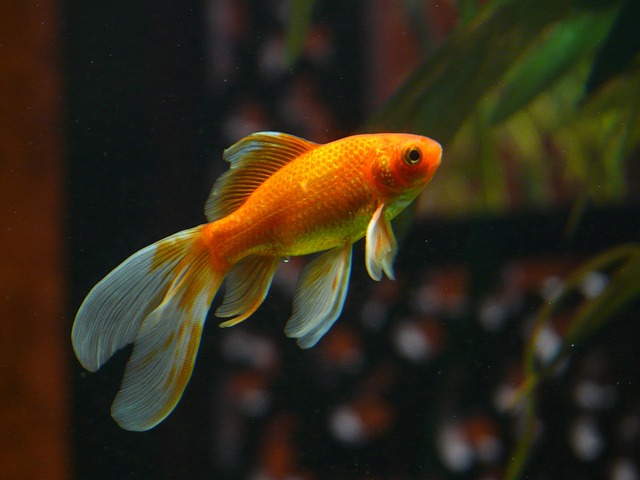Table of Contents
Have you ever wondered why goldfish die so fast? It can be frustrating to invest time and money into caring for your pet, only to have it pass away within a few months.
While goldfish are often seen as low-maintenance pets, there are several factors that can contribute to their short lifespan.
One reason why goldfish may die quickly is due to their living conditions. Goldfish require a specific environment in order to thrive, including the right size tank, proper filtration, and appropriate water temperature. If these conditions are not met, it can cause stress and illness in your fish, leading to a shorter lifespan.
Additionally, overfeeding your goldfish or using the wrong type of food can also contribute to health issues and a shorter lifespan.
Another factor that can impact the lifespan of your goldfish is genetics. Some breeds of goldfish are more prone to health issues and shorter lifespans than others.
It’s important to research different breeds before choosing a goldfish to ensure that you are selecting a healthy and long-lived pet.
While there are steps you can take to prolong your goldfish’s life, it’s important to understand that their lifespan is ultimately determined by a combination of genetics and environmental factors.
Water Quality
When it comes to keeping goldfish healthy and alive, water quality is one of the most important factors to consider. Poor water quality can lead to a variety of health problems for your fish, and can even be fatal.
In this section, we will discuss the three most important aspects of water quality to monitor: ammonia levels, nitrate and nitrite levels, and pH levels.
Ammonia Levels
Ammonia is a toxic compound that is produced by fish waste and uneaten food. In high concentrations, it can cause serious health problems for your goldfish, including ammonia poisoning.
To keep ammonia levels in check, you should test your aquarium water regularly using a test kit. Ideally, ammonia levels should be zero, but anything above 0.25 ppm can be harmful to your fish.
To reduce ammonia levels, you should perform regular water changes, feed your fish sparingly, and avoid overstocking your tank. You can also add live plants to your aquarium, which can help to absorb excess ammonia.
Nitrate and Nitrite Levels
Nitrate and nitrite are two other compounds that can be harmful to your goldfish if they are present in high concentrations. Nitrate is produced by the breakdown of ammonia, while nitrite is produced by the breakdown of nitrate.
Both compounds can cause health problems for your fish, including reduced growth and increased susceptibility to disease.
To keep nitrate and nitrite levels in check, you should test your aquarium water regularly using a test kit. Ideally, nitrate levels should be below 20 ppm, while nitrite levels should be below 0.5 ppm.
If levels are too high, you should perform a partial water change and adjust your feeding and stocking practices accordingly.
pH Levels
The pH level of your aquarium water can also have a significant impact on the health of your goldfish. Goldfish prefer a pH level between 7.0 and 8.0, and any significant fluctuations outside of this range can be stressful for your fish.
To maintain a stable pH level, you should test your aquarium water regularly using a test kit. If the pH level is too high or too low, you can adjust it using a pH buffer. It’s important to make any adjustments slowly, as rapid changes in pH can be harmful to your fish.
By monitoring and maintaining proper water quality, you can help ensure that your goldfish live long, healthy lives.
Tank Size and Population
When it comes to keeping goldfish, tank size and population are two important factors that can affect their lifespan.
Overcrowding and inadequate tank size can lead to stress, poor water quality, and disease, which can ultimately result in the death of your fish.
Overcrowding
Overcrowding is a common problem in goldfish tanks, and it can have serious consequences. When too many fish are kept in a small space, they produce more waste than the filtration system can handle.
This can lead to a buildup of harmful toxins in the water, such as ammonia and nitrite, which can cause stress and illness in your fish.
To avoid overcrowding, it’s important to know how many fish your tank can support. As a general rule, you should allow 20 gallons of water per adult goldfish. If you have a smaller tank, you may need to keep fewer fish or consider upgrading to a larger tank.
Tank Size
In addition to overcrowding, inadequate tank size can also be a problem for goldfish. Goldfish are active swimmers and can grow quite large, so they need plenty of space to move around. Keeping them in a small tank can lead to stunted growth and health problems.
To ensure that your goldfish have enough space, it’s important to choose a tank that is appropriate for their size and activity level.
As a general rule, you should allow 10 gallons of water per inch of goldfish. For example, if you have a 6-inch goldfish, you should have at least a 60-gallon tank.
It’s also important to consider the shape of your tank. Goldfish need plenty of horizontal swimming space, so a long, rectangular tank is ideal. Tall, narrow tanks may look nice, but they don’t provide enough space for your fish to swim.
By providing your goldfish with a spacious, well-filtered tank, you can help ensure that they live a long and healthy life.
Diet and Feeding
When it comes to keeping your goldfish healthy and happy, their diet and feeding habits are essential factors to consider.
In this section, we’ll discuss some of the most common feeding mistakes that can cause goldfish to die prematurely.
Overfeeding
Overfeeding is one of the most common mistakes that goldfish owners make. Goldfish have a reputation for being voracious eaters, and it’s easy to fall into the trap of feeding them too much.
But overfeeding can cause serious health problems for your goldfish, including swim bladder disease, constipation, and even death.
To avoid overfeeding, it’s important to establish a feeding schedule and stick to it. A good rule of thumb is to feed your goldfish only what they can eat in two to three minutes, two to three times a day. You can also use a feeding ring to control the amount of food your goldfish consume.
Lack of Nutrients
Another common reason why goldfish die prematurely is a lack of nutrients in their diet. Goldfish require a balanced diet that includes a variety of nutrients, including protein, fats, and carbohydrates. If they don’t get the nutrients they need, they can become weak and susceptible to disease.
To ensure your goldfish are getting the nutrients they need, feed them a high-quality commercial fish food that is specifically formulated for goldfish.
You can also supplement their diet with fresh vegetables like peas, lettuce, and spinach, which are rich in vitamins and minerals.
In addition to providing a balanced diet, it’s also important to avoid feeding your goldfish foods that are harmful to them.
Some foods to avoid include bread, crackers, and processed foods, which can cause digestive problems and lead to obesity.
By following these feeding tips and providing your goldfish with a balanced diet, you can help ensure they live a long and healthy life.
Water Temperature and Oxygenation
If you’ve ever owned a goldfish, you’ve probably noticed that they seem to die quite quickly. There are a number of factors that can contribute to this, including water temperature and oxygenation.
Water Temperature
Goldfish are cold-water fish and thrive in temperatures between 65 and 75 degrees Fahrenheit. If the water temperature is too high or too low, it can stress out the fish and lead to health problems. If the water temperature is too high, it can cause the fish to become lethargic and lose their appetite.
If the water temperature is too low, it can slow down the , making it more susceptible to disease.
Oxygenation
Another important factor to consider is oxygenation. Goldfish need a constant supply of oxygen to survive, and if the water is not properly oxygenated, it can lead to health problems and even death.
The primary way that goldfish get oxygen is through their gills, which extract oxygen from the water as it passes over them.
If the water is not properly oxygenated, it can cause the fish to become stressed and lethargic. This can lead to a weakened immune system, making the fish more susceptible to disease. In extreme cases, a lack of oxygen can cause the fish to suffocate and die.
To ensure that your goldfish are getting enough oxygen, it’s important to maintain a healthy water flow in your tank. You can also add an air stone or a bubble wand to increase the oxygenation in the water.
Additionally, it’s important to regularly clean your tank and change the water to remove any buildup of waste or debris that can reduce the oxygen levels in the water.
In summary, water temperature and oxygenation are two important factors to consider when trying to keep your goldfish healthy.
By maintaining a consistent water temperature and ensuring that the water is properly oxygenated, you can help your goldfish live a long and healthy life.
Genetics and Breeding
Goldfish have been bred for centuries, and this has led to a wide variety of shapes, colors, and sizes. However, this selective breeding has also resulted in some negative consequences for the health and lifespan of goldfish. In this section, we will explore how genetics and breeding can contribute to the short lifespan of goldfish.
Inbreeding
Inbreeding is the process of breeding closely related individuals. While this can be useful for creating a specific trait or characteristic, it can also lead to genetic problems in the offspring.
Inbreeding can result in a reduced genetic diversity, which can make the offspring more susceptible to disease and genetic disorders.
Goldfish are often inbred to create specific traits, such as larger fins or a particular color. However, this can lead to reduced genetic diversity and an increased risk of genetic disorders. For example, inbred goldfish are more likely to develop tumors, which can be fatal.
Genetic Disorders
Selective breeding can also result in genetic disorders in goldfish. Some genetic disorders are more common in certain breeds of goldfish.
For example, the Bubble Eye goldfish are prone to eye problems due to the sacs of fluid that develop under their eyes. Similarly, the Telescope Eye goldfish are prone to vision problems due to their protruding eyes.
In addition, some goldfish breeds have been selectively bred to have a shorter lifespan. For example, the Shubunkin goldfish is known to have a shorter lifespan than other breeds due to the way they have been bred.
In conclusion, genetics and breeding can contribute to the short lifespan of goldfish. Inbreeding can result in reduced genetic diversity and an increased risk of genetic disorders, while selective breeding can lead to specific genetic disorders and a shorter lifespan in some goldfish breeds.







